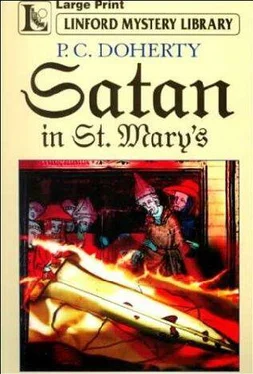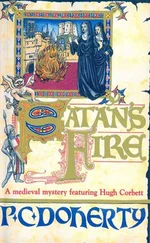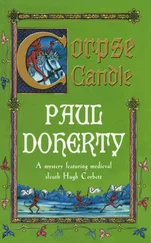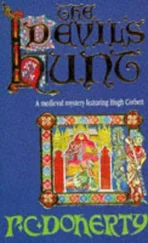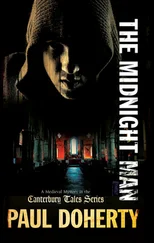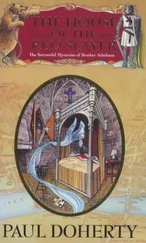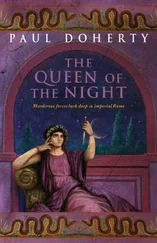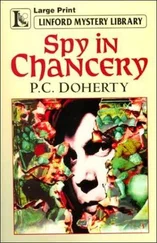Paul Doherty - Satan in St Mary
Здесь есть возможность читать онлайн «Paul Doherty - Satan in St Mary» весь текст электронной книги совершенно бесплатно (целиком полную версию без сокращений). В некоторых случаях можно слушать аудио, скачать через торрент в формате fb2 и присутствует краткое содержание. Жанр: Исторический детектив, на английском языке. Описание произведения, (предисловие) а так же отзывы посетителей доступны на портале библиотеки ЛибКат.
- Название:Satan in St Mary
- Автор:
- Жанр:
- Год:неизвестен
- ISBN:нет данных
- Рейтинг книги:5 / 5. Голосов: 1
-
Избранное:Добавить в избранное
- Отзывы:
-
Ваша оценка:
- 100
- 1
- 2
- 3
- 4
- 5
Satan in St Mary: краткое содержание, описание и аннотация
Предлагаем к чтению аннотацию, описание, краткое содержание или предисловие (зависит от того, что написал сам автор книги «Satan in St Mary»). Если вы не нашли необходимую информацию о книге — напишите в комментариях, мы постараемся отыскать её.
Satan in St Mary — читать онлайн бесплатно полную книгу (весь текст) целиком
Ниже представлен текст книги, разбитый по страницам. Система сохранения места последней прочитанной страницы, позволяет с удобством читать онлайн бесплатно книгу «Satan in St Mary», без необходимости каждый раз заново искать на чём Вы остановились. Поставьте закладку, и сможете в любой момент перейти на страницу, на которой закончили чтение.
Интервал:
Закладка:
Corbett watched all this, trying to divert his mind and calm his frayed nerves. He wished he could scrape away the lies and fashion the truth from the many deceits he had discovered. Was there a finished product he wondered, or would he stay floundering in a morass of doubt until the assassins reached him or, until Burnell dismissed him ignominiously from his task? If only he could find out why Duket stabbed Crepyn. If only he could discover how the murderers, for there must have been more than one, had gained access to the church and then so easily escaped. There was one other problem. Why was Bellet so confident? Why did it always appear that the priest knew he was coming, even more, almost sensed that Corbett was stumbling around in the dark? Like some jester in a mummer's play, put there for the quiet laughter of the onlookers?
Thirteen
Corbett was still trying to solve the problem, almost talking aloud, arguing with himself when, their long walk was over, and Ranulf and he found themselves on Bridge Street walking down to the river with the fortified gate and mass of London Bridge rising ahead of them. They did not approach the bridge but turned off down an alleyway which led to the river where they secured passage on a boat to Westminster. Corbett was not looking forward to the coming interview with the Chancellor and wished he could go back to The Mitre, the soft, calming embrace of Alice's body and be done with this matter once and for all.
Yet, like a man in a dream, he left the boat when it docked and followed the well-worn path to the Great Hall, envying the clerks writing quietly in their stalls or scurrying about on some important business. He reached Burnell's room and, taking a deep breath, asked the clerk outside to announce him. The man went ahead but returned followed by the pompous Hubert, who dismissed Ranulf with almost a girlish flicker of his eyes and thrust a leather chancery pouch into his hands. "The Lord Chancellor has had to leave, " he loudly proclaimed. "He has gone to join the King at Oxford. He asked me to leave you this and, " he extended a sealed writ, "these orders. "
Hubert glared at Corbett. "Well, " he snapped. "Aren't you going to open the letters?"
Corbett smiled, realizing that Hubert did not know what was in the document and was probably dying with curiosity to find out. "No, " Corbett replied slowly. "The Lord Chancellor gave me specific instructions not to open these in the presence of any junior clerk!" He then turned away and walked down the Great Hall, Ranulf trotting behind, with Hubert rooted to the spot, looking as if he was suffering from an attack of apoplexy. As he walked, Corbett opened the writ and found that it was simply a licence to reside in the Tower and have the right to leave and enter whenever he wished.
Ranulf, walking behind, quietly groaned at the weight of the saddlebags, tired of the aimless walking about and wondering where he would spend the night. He wished, despite the crossbow bolts, that he could go back to Thames Street. He thought of the lady of the house and almost groaned with pleasure. She was sulky and arrogant but he had seen the way she had looked at him and knew he could possess her. She might be a grand merchant's wife with her swaying hips and gartered hose but, on a feather bed with those legs about him, he would make her happy. Yet, not now and he almost cried when he followed his inscrutable master into the boat and instructed the oarsman to take them to the Tower Wharf.
Despite his mood, Ranulf decided to enjoy the journey, exchanging ribald insults with the boatman while Corbett sat and stared moodily into the water. The boat passed the Baynards Castle, the Steelyard and other craft, long and small, still making their way along the river. Eventually, the boat sped under London's house-laden bridge with its nineteen arches each protected by starlings, wooden boat-like structures which prevented boats crushing into the hard stone arches. Then on, past Botolph's Wharf,
Billingsgate and the Wool Quarry until they berthed under the soaring stone mass of the Tower.
The formidable rings of walls, fortresses and towers dominated the south-east corner of the capital and overawed both Ranulf and Corbett as they crossed the moat and went through successive towers, many of them in the process of being redeveloped, into the inner ward which surrounded the four-square, central donjon or White Tower. Corbett and Ranulf were challenged as they approached each gateway but, on producing Burnell's writ, Corbett and his companion were allowed to proceed. In the inner ward, a burly Yorkshireman, a serjeant from the garrison, told them to stay, while he went looking for the Constable, Sir Edward Swynnerton. He was gone a while, leaving both men in the freezing cold to stare about them and take in their surroundings.
The bailey round the White Tower was quiet though Corbett could see that the building operations in the Tower would begin again in the spring. Bricks were stacked round the huge kilns where they were made, sand and gravel were strewn across the ground and huge oaken beams lay in lop-sided heaps. The Tower was almost a small town in itself. Rows of wooden stables, a pigeon loft, open-fronted kitchens, barns and hen coops all huddled together round the walls. There was a small, bare tree orchard in one far corner and the wood and plaster houses of the officers of the Tower in another near the main entrance. Corbett moved across to where Ranulf was staring at a derelict Magonel, when a tall, silver-haired austere man, wrapped in a thick brown military cloak approached and introduced himself as Sir Edward Swynnerton, Constable of the Tower. Corbett introduced himself and Ranulf, showed the Chancellor's writ and briefly explained why they had come to the Tower. The Constable stared hard at Corbett and looked as if he was going to protest but then he scratched his grizzled head and summoned a guard to take Corbett and Ranulf to a sparse chamber in the White Tower.
Once there, Ranulf, exhausted with all the walking, curled up on his straw-stuffed mattress and fell asleep while Corbett lit the two candles in the room to read the report that Burnell had left for him in the leather chancery pouch. It was written in the Chancellor's own hand.
"Robert Burnell, Bishop of Bath and Wells and Chancellor of England, to our trusty and well-beloved clerk, Hugh Corbett, greetings. I have read your letter and noted its contents. I believe this reply and the information it contains will be of use to you. Item: the drawing of the Pentangle found in Ralph Crepyn's house (and we will not ask how you came by it!) is not unknown to me. The Pentangle is a sign used in magic and the black arts. It is often drawn by the Magician or Witch on the floor or table as a symbol of protection when summoning Satan or some other diabolic power. Of course, it is one thing to summon the rulers of the demonic kingdom and another if they actually come. Nevertheless, those who practise the black arts and dabble in magic pose a threat to Holy Mother Church and in doing so pose an even more dangerous threat to the safety and security of the throne. There is no doubt that members of the Pentangle also include adherents of the radicals who still support the ideas of the dead de Montfort.
"Item: Simon de Montfort's father was a Crusader and fought for the Cross in Palestine and other lands in Outremer. De Montfort also led Crusades against the Albigensians in Southern France, whose heretical practices were supposed to be secret, closely linked to necromancy and sorcery. I merely tell you of this to draw a link between rebellion and those who exercise black magic with their secret name, 'The Pentangle'!. Although the de Montforts were resolute Crusaders, there is no doubt that they may have become infected by the very diseases they tried to destroy.
Читать дальшеИнтервал:
Закладка:
Похожие книги на «Satan in St Mary»
Представляем Вашему вниманию похожие книги на «Satan in St Mary» списком для выбора. Мы отобрали схожую по названию и смыслу литературу в надежде предоставить читателям больше вариантов отыскать новые, интересные, ещё непрочитанные произведения.
Обсуждение, отзывы о книге «Satan in St Mary» и просто собственные мнения читателей. Оставьте ваши комментарии, напишите, что Вы думаете о произведении, его смысле или главных героях. Укажите что конкретно понравилось, а что нет, и почему Вы так считаете.
